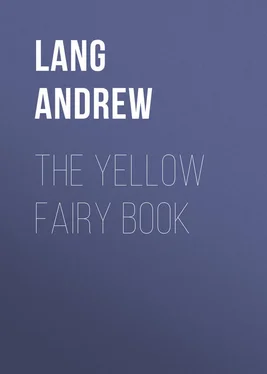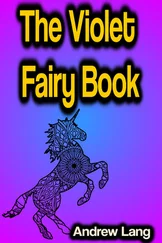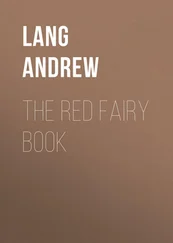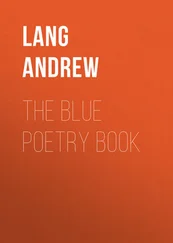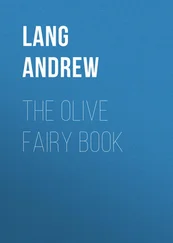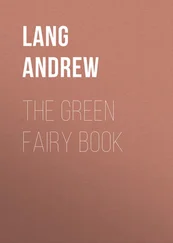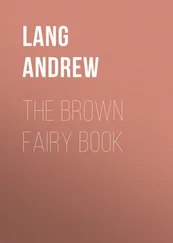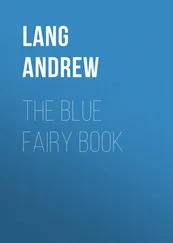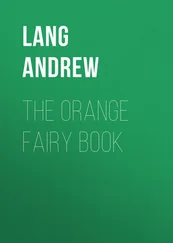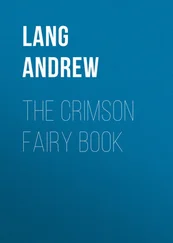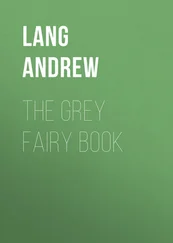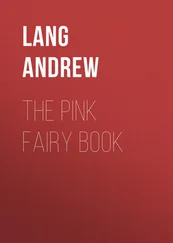Andrew Lang - The Yellow Fairy Book
Здесь есть возможность читать онлайн «Andrew Lang - The Yellow Fairy Book» — ознакомительный отрывок электронной книги совершенно бесплатно, а после прочтения отрывка купить полную версию. В некоторых случаях можно слушать аудио, скачать через торрент в формате fb2 и присутствует краткое содержание. Жанр: foreign_antique, foreign_prose, на английском языке. Описание произведения, (предисловие) а так же отзывы посетителей доступны на портале библиотеки ЛибКат.
- Название:The Yellow Fairy Book
- Автор:
- Жанр:
- Год:неизвестен
- ISBN:нет данных
- Рейтинг книги:3 / 5. Голосов: 1
-
Избранное:Добавить в избранное
- Отзывы:
-
Ваша оценка:
- 60
- 1
- 2
- 3
- 4
- 5
The Yellow Fairy Book: краткое содержание, описание и аннотация
Предлагаем к чтению аннотацию, описание, краткое содержание или предисловие (зависит от того, что написал сам автор книги «The Yellow Fairy Book»). Если вы не нашли необходимую информацию о книге — напишите в комментариях, мы постараемся отыскать её.
The Yellow Fairy Book — читать онлайн ознакомительный отрывок
Ниже представлен текст книги, разбитый по страницам. Система сохранения места последней прочитанной страницы, позволяет с удобством читать онлайн бесплатно книгу «The Yellow Fairy Book», без необходимости каждый раз заново искать на чём Вы остановились. Поставьте закладку, и сможете в любой момент перейти на страницу, на которой закончили чтение.
Интервал:
Закладка:
The Yellow Fairy Book
Books Yellow, Red, and Green and Blue,
All true, or just as good as true,
And here's the Yellow Book for you !
Hard is the path from A to Z,
And puzzling to a curly head,
Yet leads to Books – Green, Blue, and Red
For every child should understand
That letters from the first were planned
To guide us into Fairy Land
So labour at your Alphabet,
For by that learning shall you get
To lands where Fairies may be met.
And going where this pathway goes,
You too, at last, may find, who knows?
The Garden of the Singing Rose.
PREFACE
The Editor thinks that children will readily forgive him for publishing another Fairy Book. We have had the Blue, the Red, the Green, and here is the Yellow. If children are pleased, and they are so kind as to say that they are pleased, the Editor does not care very much for what other people may say. Now, there is one gentleman who seems to think that it is not quite right to print so many fairy tales, with pictures, and to publish them in red and blue covers. He is named Mr. G. Laurence Gomme, and he is president of a learned body called the Folk Lore Society. Once a year he makes his address to his subjects, of whom the Editor is one, and Mr. Joseph Jacobs (who has published many delightful fairy tales with pretty pictures) 1 1 You may buy them from Mr. Nutt, in the Strand.
is another. Fancy, then, the dismay of Mr. Jacobs, and of the Editor, when they heard their president say that he did not think it very nice in them to publish fairy books, above all, red, green, and blue fairy books! They said that they did not see any harm in it, and they were ready to 'put themselves on their country,' and be tried by a jury of children. And, indeed, they still see no harm in what they have done; nay, like Father William in the poem, they are ready 'to do it again and again.'
Where is the harm? The truth is that the Folk Lore Society – made up of the most clever, learned, and beautiful men and women of the country – is fond of studying the history and geography of Fairy Land. This is contained in very old tales, such as country people tell, and savages:
'Little Sioux and little Crow,
Little frosty Eskimo.'
These people are thought to know most about fairyland and its inhabitants. But, in the Yellow Fairy Book, and the rest, are many tales by persons who are neither savages nor rustics, such as Madame D'Aulnoy and Herr Hans Christian Andersen. The Folk Lore Society, or its president, say that their tales are not so true as the rest, and should not be published with the rest. But we say that all the stories which are pleasant to read are quite true enough for us; so here they are, with pictures by Mr. Ford, and we do not think that either the pictures or the stories are likely to mislead children.
As to whether there are really any fairies or not, that is a difficult question. Professor Huxley thinks there are none. The Editor never saw any himself, but he knows several people who have seen them – in the Highlands – and heard their music. If ever you are in Nether Lochaber, go to the Fairy Hill, and you may hear the music yourself, as grown-up people have done, but you must go on a fine day. Again, if there are really no fairies, why do people believe in them, all over the world? The ancient Greeks believed, so did the old Egyptians, and the Hindoos, and the Red Indians, and is it likely, if there are no fairies, that so many different peoples would have seen and heard them? The Rev. Mr. Baring-Gould saw several fairies when he was a boy, and was travelling in the land of the Troubadours. For these reasons, the Editor thinks that there are certainly fairies, but they never do anyone any harm; and, in England, they have been frightened away by smoke and schoolmasters. As to Giants, they have died out, but real Dwarfs are common in the forests of Africa. Probably a good many stories not perfectly true have been told about fairies, but such stories have also been told about Napoleon, Claverhouse, Julius Cæsar, and Joan of Arc, all of whom certainly existed. A wise child will, therefore, remember that, if he grows up and becomes a member of the Folk Lore Society, all the tales in this book were not offered to him as absolutely truthful, but were printed merely for his entertainment. The exact facts he can learn later, or he can leave them alone.
There are Russian, German, French, Icelandic, Red Indian, and other stories here. They were translated by Miss Cheape, Miss Alma, and Miss Thyra Alleyne, Miss Sellar, Mr. Craigie (he did the Icelandic tales), Miss Blackley, Mrs. Dent, and Mrs. Lang, but the Red Indian stories are copied from English versions published by the Smithsonian Bureau of Ethnology, in America. Mr. Ford did the pictures, and it is hoped that children will find the book not less pleasing than those which have already been submitted to their consideration. The Editor cannot say 'good-bye' without advising them, as they pursue their studies, to read The Rose and the Ring , by the late Mr. Thackeray, with pictures by the author. This book he thinks quite indispensable in every child's library, and parents should be urged to purchase it at the first opportunity, as without it no education is complete.
A. LANG.
THE CAT AND THE MOUSE IN PARTNERSHIP
A cat had made acquaintance with a mouse, and had spoken so much of the great love and friendship she felt for her, that at last the Mouse consented to live in the same house with her, and to go shares in the housekeeping. 'But we must provide for the winter or else we shall suffer hunger,' said the Cat. 'You, little Mouse, cannot venture everywhere in case you run at last into a trap.' This good counsel was followed, and a little pot of fat was bought. But they did not know where to put it. At length, after long consultation, the Cat said, 'I know of no place where it could be better put than in the church. No one will trouble to take it away from there. We will hide it in a corner, and we won't touch it till we are in want.' So the little pot was placed in safety; but it was not long before the Cat had a great longing for it, and said to the Mouse, 'I wanted to tell you, little Mouse, that my cousin has a little son, white with brown spots, and she wants me to be godmother to it. Let me go out to-day, and do you take care of the house alone.'
'Yes, go certainly,' replied the Mouse, 'and when you eat anything good, think of me; I should very much like a drop of the red christening wine.'
But it was all untrue. The Cat had no cousin, and had not been asked to be godmother. She went straight to the church, slunk to the little pot of fat, began to lick it, and licked the top off. Then she took a walk on the roofs of the town, looked at the view, stretched herself out in the sun, and licked her lips whenever she thought of the little pot of fat. As soon as it was evening she went home again.
'Ah, here you are again!' said the Mouse; 'you must certainly have had an enjoyable day.'
'It went off very well,' answered the Cat.
'What was the child's name?' asked the Mouse.
'Top Off,' said the Cat drily.
'Topoff!' echoed the Mouse, 'it is indeed a wonderful and curious name. Is it in your family?'
'What is there odd about it?' said the Cat. 'It is not worse than Breadthief, as your godchild is called.'
Not long after this another great longing came over the Cat. She said to the Mouse, 'You must again be kind enough to look after the house alone, for I have been asked a second time to stand godmother, and as this child has a white ring round its neck, I cannot refuse.'
Читать дальшеИнтервал:
Закладка:
Похожие книги на «The Yellow Fairy Book»
Представляем Вашему вниманию похожие книги на «The Yellow Fairy Book» списком для выбора. Мы отобрали схожую по названию и смыслу литературу в надежде предоставить читателям больше вариантов отыскать новые, интересные, ещё непрочитанные произведения.
Обсуждение, отзывы о книге «The Yellow Fairy Book» и просто собственные мнения читателей. Оставьте ваши комментарии, напишите, что Вы думаете о произведении, его смысле или главных героях. Укажите что конкретно понравилось, а что нет, и почему Вы так считаете.
